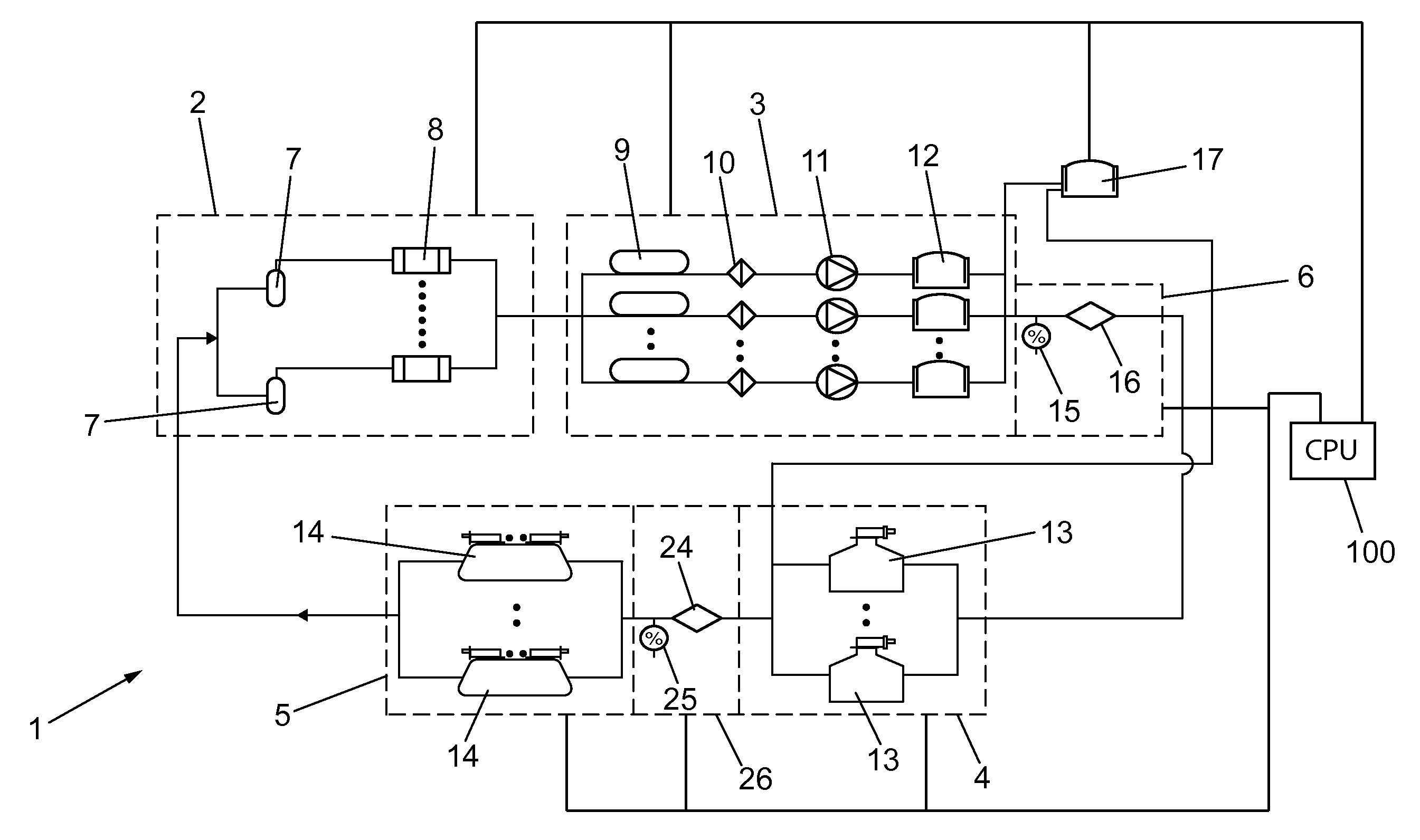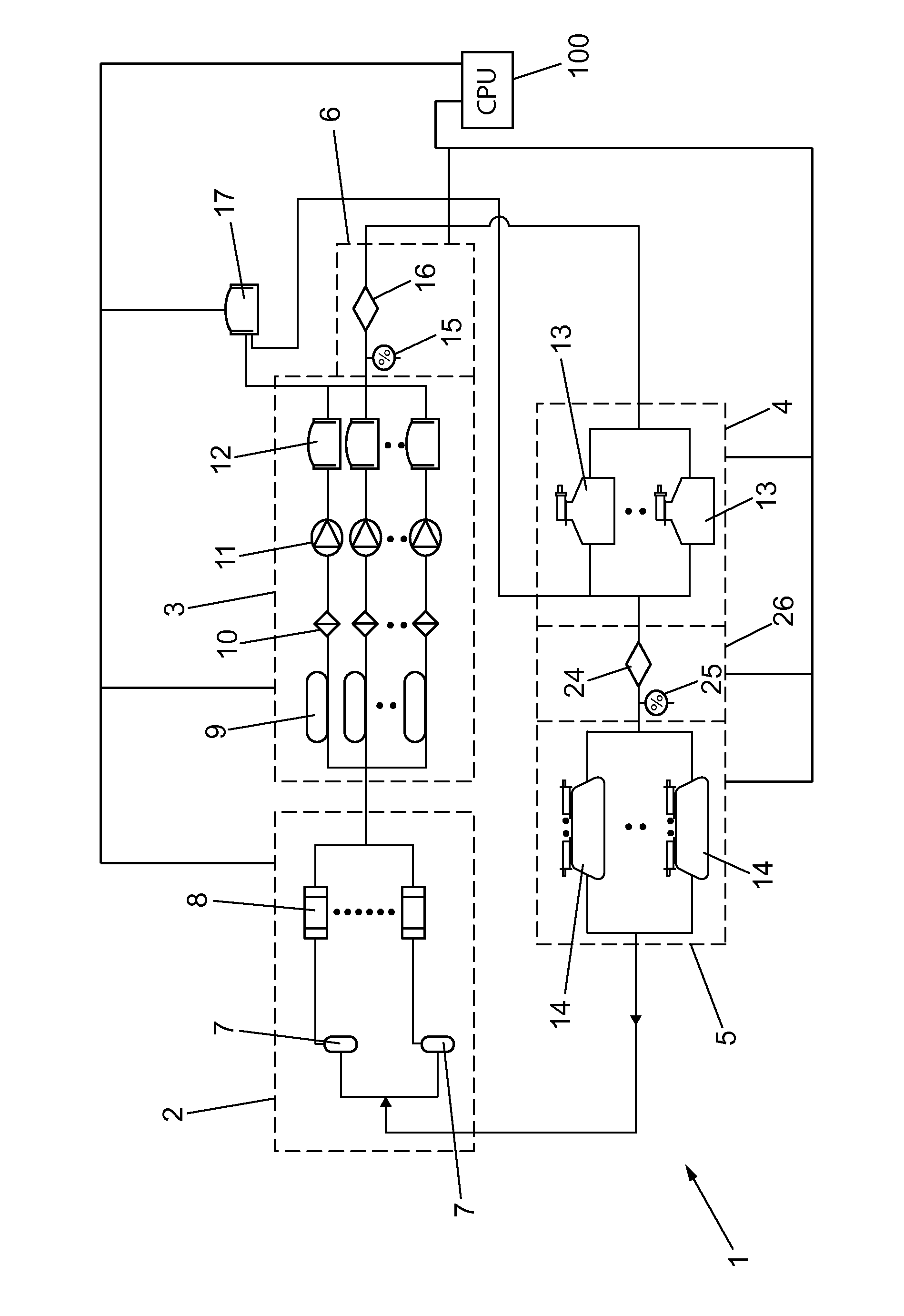Helium-recovery plant
a gas recovery and helium technology, applied in the direction of lighting and heating equipment, liquid solidification, refrigeration and liquidation, etc., can solve the problems of large loss, complex facilities for the storage of vast volumes, and difficulty in extraction, so as to reduce the cost
- Summary
- Abstract
- Description
- Claims
- Application Information
AI Technical Summary
Benefits of technology
Problems solved by technology
Method used
Image
Examples
Embodiment Construction
[0014]A closed-cycle, high-efficiency, automated helium recovery plant is here described. This high-efficiency helium recovery plant is adapted for computerized control and switching between a liquefaction mode and a standby mode, and is further adapted to collect, re-liquefy, and redistribute recovered helium amongst a plurality of medical or scientific instruments or other equipment. As helium gas is utilized among several instruments within the closed system, it is recovered and subsequently liquefied before being re-introduced to the equipment such that a finite supply of helium is continuously recycled, without or at least with only minimal loss, within the closed system, thus reducing the cost associated with resupply of virgin helium gas.
[0015]The helium recovery plant disclosed herein covers a liquefaction range of between zero liters / hour when operated in standby mode, and more than 10 liters / hour when operating in liquefaction mode. In this regard, this helium recovery pla...
PUM
 Login to View More
Login to View More Abstract
Description
Claims
Application Information
 Login to View More
Login to View More - R&D
- Intellectual Property
- Life Sciences
- Materials
- Tech Scout
- Unparalleled Data Quality
- Higher Quality Content
- 60% Fewer Hallucinations
Browse by: Latest US Patents, China's latest patents, Technical Efficacy Thesaurus, Application Domain, Technology Topic, Popular Technical Reports.
© 2025 PatSnap. All rights reserved.Legal|Privacy policy|Modern Slavery Act Transparency Statement|Sitemap|About US| Contact US: help@patsnap.com


